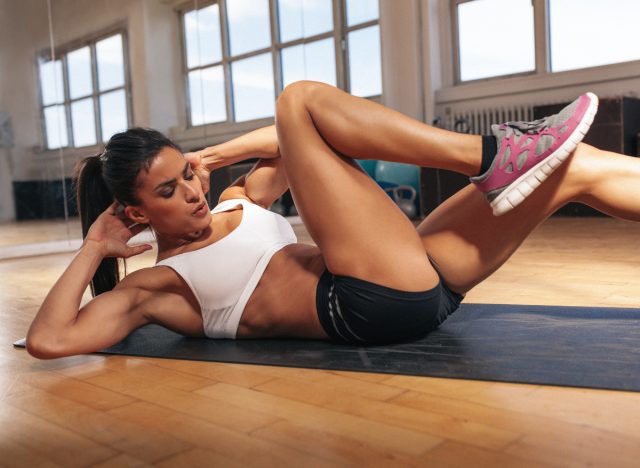Training your obliques should be a top priority when it comes to your workouts. Your obliques play a critical role in your daily mobility; they work hard to support your spine and stabilize your core so you can successfully perform daily tasks. They’re essential for movements such as bending, turning, twisting, and leading an active lifestyle. That’s why we chatted with a fitness pro who shares exactly how many days a week to train your obliques for a strong and sculpted waistline.
The Ideal Weekly Training Frequency for Your Obliques


Your obliques are “one of the most sought-after” muscles in the body, explains Marshall Weber, a certified personal trainer and the owner of Jack City Fitness.
“I think the biggest downfall that most people experience is going too hard too fast,” Weber tells us. “Especially as the conversation of obliques really picks up around summertime. Then is the case of over doing it to try and get the summer body in order. There needs to be a more consistent approach to our obliques, with a few days in between to recover.”
According to Weber, training your obliques two to three times a week is a solid goal to strive for, staying consistent with this habit throughout the year. Oblique training should complement your core workouts, especially if you want to sculpt and tone your waistline.
“The best types of workouts to target this would be things like side planks or Russian twists,” says Weber. “If you have access to weights and equipment, you incorporate side bends with a dumbbell or even use a cable machine to create resistance for things like woodchoppers.”
Keep in mind that it’s essential to strike the perfect balance with core and oblique workouts, as overtraining your core can lead to muscle imbalances. “This can lead to overcompensation of muscles (particularly in the back), injury, and even poor posture,” Weber cautions. “[Attention needs to be given to] developing a functional core, not just an aesthetically pleasing one.”
Alexa Mellardo
Alexa is the Mind + Body Deputy Editor of Eat This, Not That!, overseeing the M+B channel and delivering compelling fitness, wellness, and self-care topics to readers. Read more about Alexa










